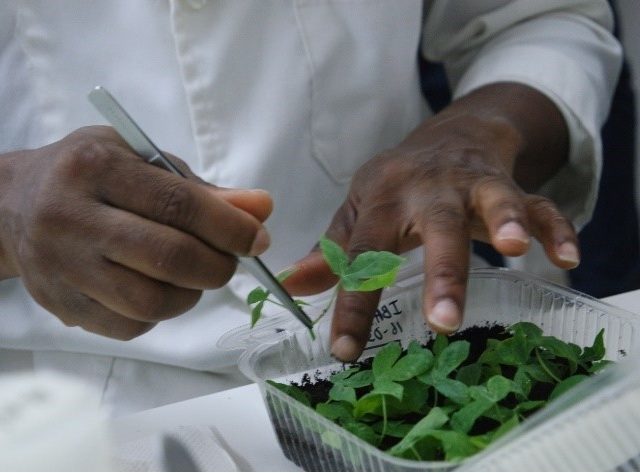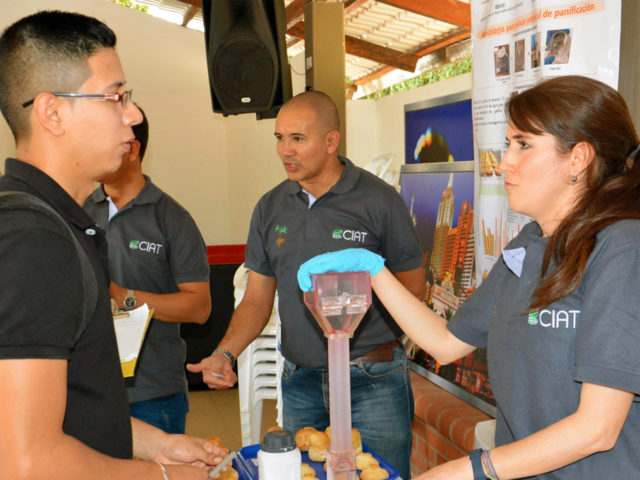Ever wake up craving some finger millet, or sit down in front of a movie with some nice groundnut?
Probably not. Finger millet and groundnut, along with tef, yam, cassava, and others, are part of a class of crops that’s often called “orphan crops” because they tend to receive less attention. Orphan crops may not sound familiar to you and me, but they’re poised to make a major impact on global food security.

Cassava. Photo by N.Palmer/CIAT
What Are They?
Orphan crops are those that aren’t traded internationally, and therefore tend to get less attention in terms of research of agricultural training and extension, such as cassava. They’re typically grown in Africa, Asia, and/or South America and eaten as part of local diets. Because they get less research attention, the breeding technology for orphan crops is lagging way behind modern technology. That means that the seeds farmers plant are less likely to be resilient to drought, flooding, or extreme temperatures; lower in productivity; and more vulnerable to pests and disease.
Why They Matter
Orphan crops are incredibly important in the countries where they’re grown. They provide income for the poorest farmers and serve as staples in the local diet. Though lagging breeding technology has hurt their resilience, especially to pests and disease, they are uniquely adapted to the environment in which they are grown.
What’s Being Done
The CGIAR program on Roots, Tubers, and Bananas is working on research-for-development to breed better plants, make planting material more available to farmers, manage pests and diseases, and spread better postharvest technologies so that more of the crop can be eaten.
Extract from the International Food Information Council Foundation. Read more on their website.


